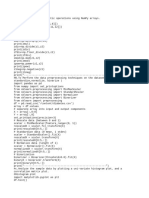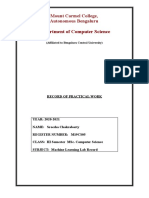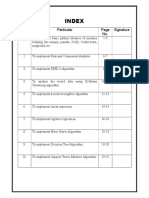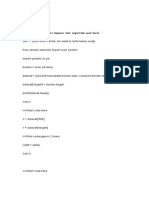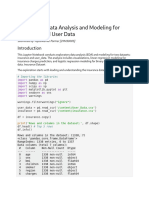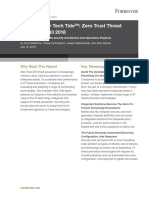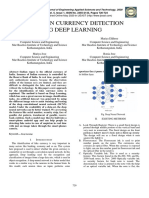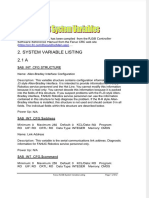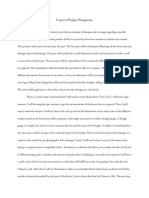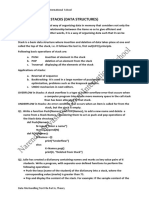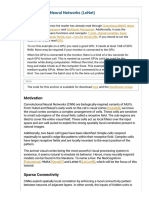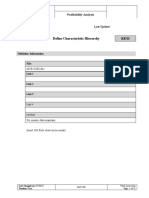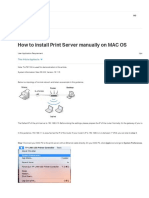0% found this document useful (0 votes)
90 views36 pagesData Mining Lab: Regression & Clustering
The document contains code for several machine learning algorithms implemented in a data mining lab practical file, including:
1. Linear regression code to predict salary and insurance costs.
2. Multiple linear regression code to predict variables using a cars dataset.
3. Logistic regression code to predict insurance purchasing using age.
4. K-means clustering algorithm code implemented on a cars dataset.
Uploaded by
JJ OLATUNJICopyright
© © All Rights Reserved
We take content rights seriously. If you suspect this is your content, claim it here.
Available Formats
Download as PDF, TXT or read online on Scribd
0% found this document useful (0 votes)
90 views36 pagesData Mining Lab: Regression & Clustering
The document contains code for several machine learning algorithms implemented in a data mining lab practical file, including:
1. Linear regression code to predict salary and insurance costs.
2. Multiple linear regression code to predict variables using a cars dataset.
3. Logistic regression code to predict insurance purchasing using age.
4. K-means clustering algorithm code implemented on a cars dataset.
Uploaded by
JJ OLATUNJICopyright
© © All Rights Reserved
We take content rights seriously. If you suspect this is your content, claim it here.
Available Formats
Download as PDF, TXT or read online on Scribd
/ 36





